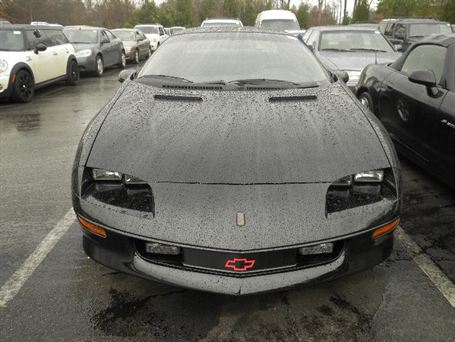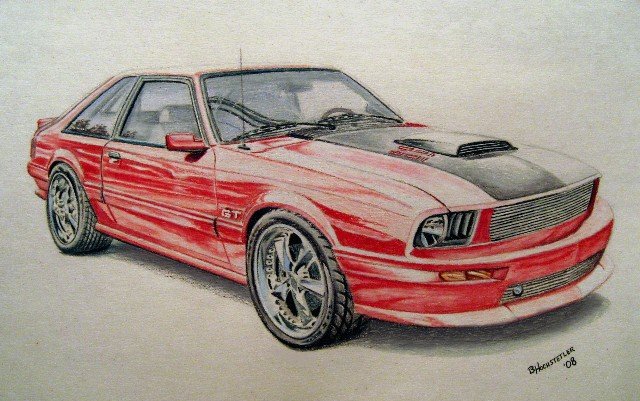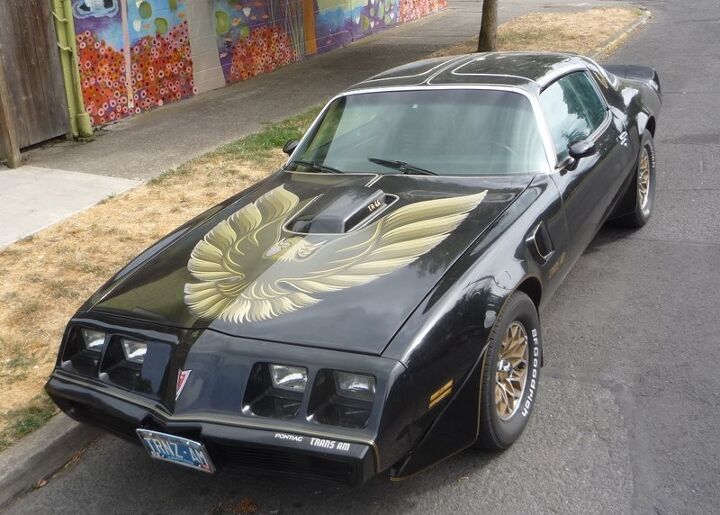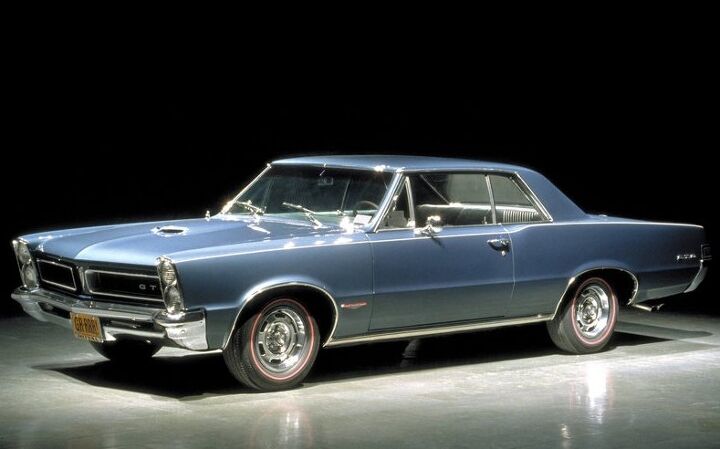#Firebird
TTAC Throwback: Here's Why You Should Buy This 1980 Pontiac Firebird "Yellowbird"
GM’s pony cars, the Chevrolet Camaro and Pontiac Firebird, received a thorough redesign for their second generation, which debuted in 1970. The Coke-bottle styling of the first-generation cars gave way to a sleek coupe with a long hood and taut fastback rear. The shape was balanced and restrained (at first), showing a decided European influence. The redesign would prove long-lived, remaining in production until 1981.
QOTD: It's 1977 and You're The Bandit. Do You Buy a Trans Am... or Something Else?
We had a 1970s movie-car QOTD last week, and that was so much fun we’re doing it again! So, here we go: in the beginning of Smokey and the Bandit, when Big Enos challenges The Bandit to fetch 400 cases of that Colorado Kool-Aid, a wad of cash of unspecified thickness gets handed over for expenses, including a “speedy car.” As we all know, The Bandit headed straight to the nearest Pontiac showroom and bought himself a brand-new 1977 Pontiac Firebird Trans Am. In the film, that car seemed to be the fastest imaginable motor vehicle (thanks to the magic of engine swaps, stunt drivers, and special effects). In reality, however, the ’77 Trans Am was kind of a bloated Malaise Era slug, and The Bandit probably had a lot of better escape-the-smokeys car choices available.
So, in his shoes and with a ’77 Trans Am-sized stack of C-notes, what car would you have bought for that run to Texarkana and back?
Monday Mileage Midget: 8,193 Miles On A 1997 Chevy Camaro Z28
Let’s say you had to move out of the country. Forever.
There are only so many things you can take with you. A few pieces of furniture. Family albums. Your antique collection of 1970’s beer bottles.
The play car you rarely drive… has to be ditched. So you unload it at a nearby dealership and hope for the best.
Piston Slap: It's Not A Fox Body… So What Is It?
TTAC’s personal window into the CAW, mikey writes:
Sajeev, as spring approached our frozen north, I couldn’t face another summer sans convertible. As a proud, retired UAW and CAW member, my choice was limited to domestics. What to buy?
The Sebring? No way. New is out of my reach, so rule out a 5th gen Camaro. Having owned a 4th gen F-body…one was enough. Did I really say that? A Solstice or Sky, maybe? Can a 50 something couple pack up and go for two days? I couldn’t find a place to store a cell phone, never mind two suit cases, and a Beer cooler.
I looked at a used “Pontiac G6” hardtop convertible. Wow! all that mechanical stuff that runs the retract? Hmmmm, lets put it this way: too many years on the assembly floor, tells me to give that baby a wide berth. Draw your own conclusions.
So today we find ourselves the proud owners of a 2008 Mustang convertible. In my way of thinking, knowedge rules, and I have zero experience with Fords, except a 1969 Marquis that was a POS when I bought it, 35 years ago. So I need to update. So I’m asking the B&B to help me out.
Curbside Classic: 1979 Pontiac Firebird Trans Am
Instead of a “screaming chicken”, the 1979 Firebird Trans Am should have a pterodactyl on the hood. This is truly a living dinosaur, the very last direct descendant of the the original big block/hi-po pony car. Once a thriving species during the golden performance car era, it was all but wiped out by that great natural calamity, the 1974 energy crisis. Challenger, Barracuda, Mustang, Javelin; even its stablemate the Camaro Z28; by 1975 they were all extinct or in deep hibernation. Only the Trans Am hung in there, and then just by a whisker, or a feather, in this case.
But Pontiac’s risky gamble to press on against the odds had a huge payoff: not only did Trans Am sales explode by the end of the decade, but it came to symbolize the whole genre. Rarely has one car so dominated the American public’s awareness: in the second half of the seventies, the Trans Am became the icon of the American performance car, for better or for worse.
An Illustrated History Of Pontiac: Part I – 1926 To 1970
Grand Prix, GTO, Firebird, LeMans, Catalina 2+2, Bonneville. The names instantly evoke automotive excitement — provided you were an enthusiast between the ages of six and sixty during the sixties. For today’s pistonheads, these storied names; indeed, the entire Pontiac brand long lost its adrenal association long before it was euthanized. Bob Lutz’ attempts to inject some life into the once-storied excitement division all came to naught: GTO, Solstice and G8. He might as well have been mainlining meth into Pontiac, but decades of budget-priced, badge-engineered mediocrity had taken their toll. Pontiac’s fall from grace may not be the worst (best?) example of GM’s branding cataclysm, but it’s certainly one of the most emotive. Pass the Kleenex.





















Recent Comments